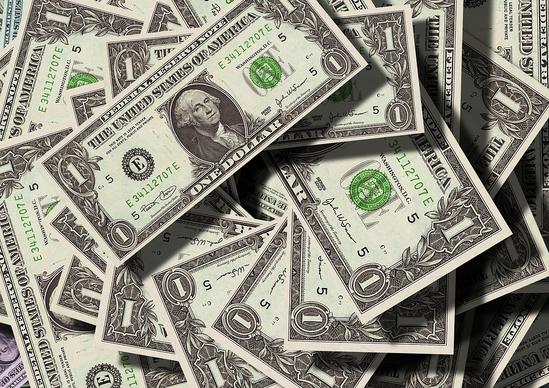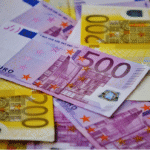The U.S. dollar fell during trade against the safe-haven Swiss franc and a handful of other currencies, including the Australian dollar, euro and yen, on Friday. This came as tentative signs that a long-feared thaw in international trade tensions could yet strengthen investors’ appetite for perceived riskier assets softened. At the same time, traders await key US jobs data later in the session, which is expected to reinforce the immediate outlook of Federal Reserve monetary policy amid a changing global trade environment.
Easing Tensions Lift Risk-Sensitive Currencies
The Australian and New Zealand broadly viewed currencies that are barometers of current risk appetite in financial markets, gained strongly as Europe and Asia equity markets continued to move higher. The rally, which began on Wall Street, came as stories surfaced out of China and Japan regarding their ongoing talks with President Donald Trump’s administration . Likewise, the euro gained 0.3 percent, and the offshore yuan in China surged to a nearly month-high against the dollar as the market virtually hung on to any word that could change the future landscape of global trade.
US Dollar: Bid Ahead of Trade Talks, but Selling Strong This Week
The U.S. dollar, however, was on track to post its third consecutive week of net gains despite the fall seen during the day. The dollar has rebounded from sharp losses in the previous month, together with U.S. Treasury bonds and equities. The earlier declines were largely blamed on the newfound uncertainty in President Donald Trump’s trade policies that had fanned fears of a coming economic slowdown and thus had weakened the bullish case for U.S. dollar assets.
The dollar was able to latch onto month-end flows, as such Kenneth Broux, Head of Corporate Research, FX and Rates at Societe Generale, remarked: The dollar earlier this week was boosted by the Bank of Japan’s dovish monetary policy guidance announced Thursday and strong earnings from major U.S. technology companies, the ongoing gains in the Nasdaq index, and steady inflows into U.S. stocks, though these developments may have been influenced by global trade prospects as well, he said.
China and Japan Indicate Possible Willingness to Engage in Trade With the United States
On Fox News late Thursday, U.S. Secretary of State Marco Rubio said talks with China on trade issues will begin “in the coming days.” His comments came after a report spread by Chinese state media which many saw as a strong sign of Beijing’s readiness for constructive trade talks with Washington. That fledgling largesse was then reinforced when China’s Commerce Ministry released an official statement on Friday saying that Beijing is “considering” a formal request from Washington to talk about President Trump’s current tariffs.
On a separate but parallel track, Japan’s chief trade negotiator Ryosei Akazawa told reporters that he had “substantial, in-depth talks” with U.S. Treasury Secretary Scott Bessent in Washington on Thursday covering a wide range of topics, including bilateral trade, non-tariffs, and economic security cooperation between their nations. As if to complicate this already complicated web of trade relations, Japan’s Finance Minister Katsunobu Kato recently hinted that the Japanese’s approximately 1 trillion dollar holdings of U.S. Treasury bonds could be structurally employed as a bargaining chip in upcoming trade talks with the USA.
Also Read: Trump Sparks US Dollar Rebound Amid Hints of US-China Trade Thaw and Fed Independence Boost
Other Key Insights
U.S. stocks were higher Thursday thanks to solid tech earnings and a mixed manufacturing report that showed factory activity continued to contract in the prior month, but not as much as expected. On Friday, the dollar index resulted in a decrease of 0.23%, but it was still set to post a weekly gain of 0.3% as trade remained thin due to different holidays. The euro rose by 0.33% to $1.1329, recovering from levels close to a three-week low. The Aussie gained 0.55% to $ 0.6418, the Swiss franc was also a haven winning 0.3%, to 0.8265 per U.S. dollar.
The dollar rose to 144.875 yen, after reaching as high as 145.91 for the first time since April 10. The yen tumbled on Thursday after the Bank of Japan kept its ultra-heavy policy intact and cut its economic growth forecasts, with the central bank mentioning the downside risks from U.S. trade tariffs in a way suggesting no expectation of tightening until the actual effects of the trade protections become clearer.
Eyeing the August non-farm payrolls (NFP) report due tomorrow, even market players now pay attention to this major US economic data, as it might give the clue as the near factor regarding the timing of interest rate cut by the US Federal Reserve due to global trade uncertainties. Economists on Wall Street have a consensus on the number of jobs created last month — about 130,000, a sharp drop off from the 228,000 jobs added in March.
A much bigger number, away from this level of consensus, would help to clarify whether the U.S. is potentially heading toward a recession such that deeper cuts would be warranted from the Federal Reserve, or somehow successfully targeting a soft landing in the face of challenging trade dynamics,” said Kenneth Broux of Societe Generale. Finally, he asked the question of whether the recent dollar rally would be met with fresh sellers, noting that selling dollar rallies, especially against the euro, had been one of the favorite trading themes in FX markets for the past couple of weeks, propelled by the latest distortions in global trade sentiment.
Follow 10X Times for more business news.






